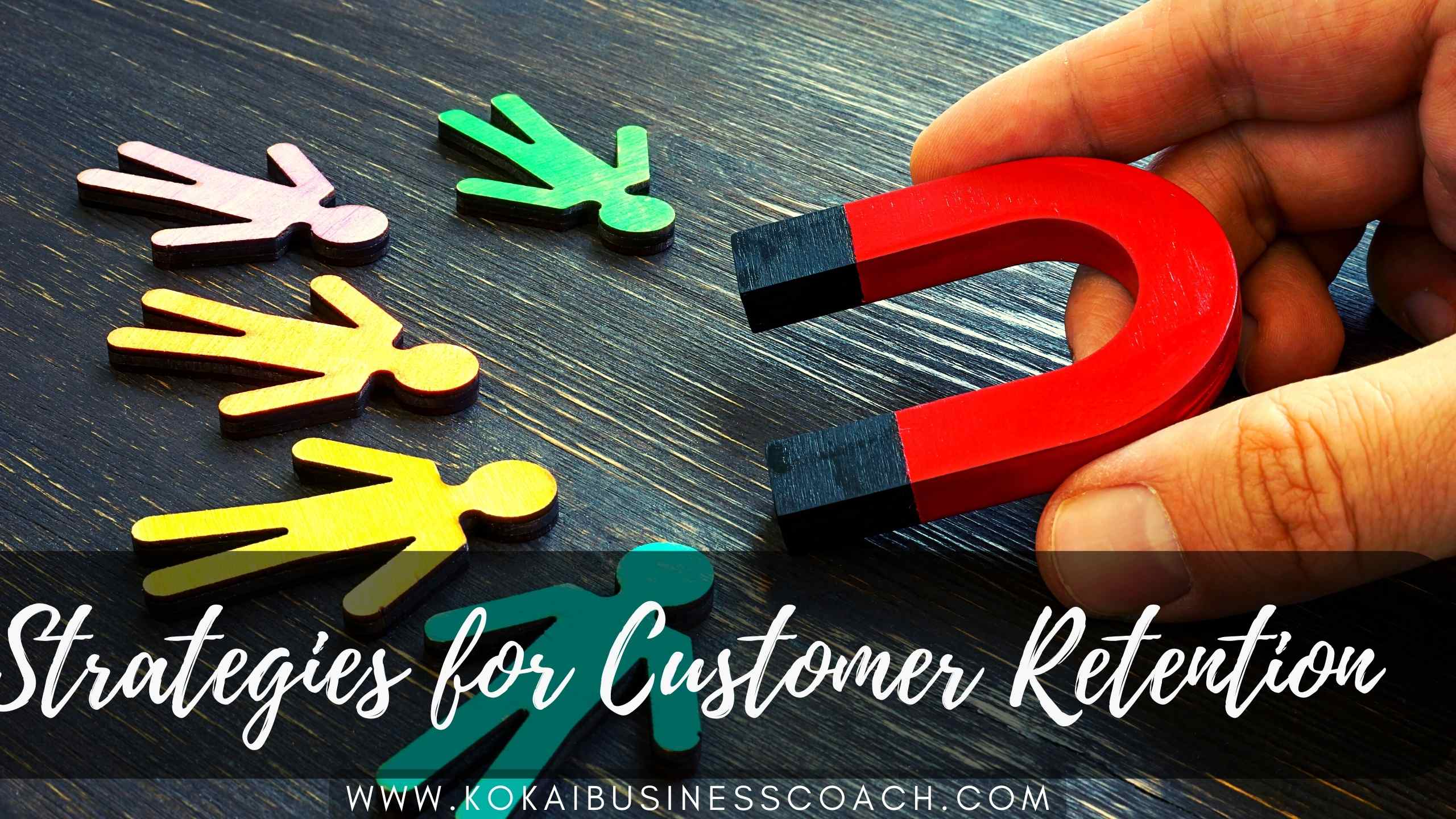Strategies for Customer Retention and Growth

Small and medium-sized business owners and sales managers struggle in the dynamic fields of sales in 2023. This is the non-complete list of challenges; companies have to struggle with:
- Global Economic Uncertainty: Factors like geopolitical tensions, trade disputes, and unforeseen events can create uncertainty, impacting the global economic landscape.
- Supply Chain Disruptions: Ongoing issues or new disruptions in supply chains can affect production, distribution, and overall business operations.
- Inflation and Rising Costs: Inflationary pressures and increasing costs of raw materials, labor, and transportation can strain profit margins for businesses.
- Changing Consumer Behavior: Shifts in consumer preferences and behaviors, especially influenced by global events or societal changes, can impact sales strategies.
- Environmental and Social Responsibility: Growing awareness and expectations regarding environmental and social responsibility may necessitate adjustments in business practices.
- Talent Shortages: Difficulty in attracting and retaining skilled talent, exacerbated by demographic changes and skill gaps, can affect business operations.
- Market Saturation: In some industries, market saturation can make it challenging for businesses to differentiate themselves and capture new market share.
Seize the keys to successful customer retention and growth! Navigating the customer retention landscape amidst today’s challenges demands a nuanced approach. Let’s unravel the key challenges and explore proven strategies to not just retain but foster growth within your customer base.
Understanding the Landscape: Challenges in Customer Retention
As we navigate the evolving landscape of customer retention, it’s crucial to acknowledge the unique challenges faced by businesses in sales. Among the challanges listed above, there are some you cannot fight as a company. You can’t solve inflation or global economy issues. Why not focus on those, which you can have an impact on? According to a survey conducted by Hubs in November 2022, 57% of businesses state that disruptions in the supply chain significantly affect their company’s revenue. In addition, supply chain disruptions can cause significant negative losses in terms of finances (62%), logistics (54%), and reputation (54%).
COVID-19 was the second biggest cause of disruptions, affecting 57% of companies in 2022. Supply chain disruptions can cause as much as a 62% loss in finances. In this climate, survival hinges on the ability to retain customers effectively. Customer resilience became again an important goal for these organisations.
Proven Strategies for Customer Retention
In the quest for customer retention, loyalty programs, incentives, and exclusivities emerge as indispensable tools. Consider this: Implement a loyalty program mirroring the success of REI, cultivating a community around your brand. Emulate Nike’s omnichannel customer service to streamline every interaction seamlessly. Take inspiration from Ikea’s interactive educational content, positioning your brand as a knowledgeable authority. Stay top-of-mind with newsletters and emails, à la Robinhood. Nordstrom excels at collecting and utilizing feedback, while Zappos expresses genuine gratitude. Amazon seamlessly incorporates subscriptions, creating a steady revenue stream. In the realm of customer retention, personalization is not just a strategy; it’s a commitment to understanding and valuing your customers.
The Power of Personalized Engagement in Customer Loyalty
Now, let’s delve into the transformative impact of personalized engagement on customer loyalty. Imagine your customers feeling not just satisfied but genuinely valued, receiving personalized treatment and unwavering support. This isn’t merely a transaction; it’s an immersive experience that forges a lasting connection. Early engagement and maintaining proximity to your customers are the keys to cultivating brand advocates.
Data Analytics: Leveraging Data for Enhanced Customer Retention
In the intricate landscape of customer retention, data analytics serves as your crystal ball. Beyond mere numbers, analyzing data and trends empowers you to make informed decisions. It’s about understanding your customers at a granular level, anticipating their needs, and tailoring your approach accordingly. Incorporate these insights into your customer retention strategy to stay ahead in a competitive market.
RFM – Recency, Frequency, Monatery Value
„RFM” is a data analytics method used for analyzing customer value and segmenting customers which is commonly used in database marketing and direct marketing. It has received particular attention in the retail and professional services industries.
RFM stands for the three dimensions:
Recency – How recently did the customer purchase?
Frequency – How often do they purchase?
Monetary Value – How much do they spend?
RFM seeks to understand a customers current relationship with your organization by determining the recency, frequency and monetary value of the purchases they make with your business. This tool is a key indicator of a customer’s current relationship with you. The structure allows you to assign a score to every record in your customer database, either at a point in time or continuously in a ‘live’ capacity, depending on how you wish to monitor the score.
Knowing a client’s RFM score means that you can assign communications or automation capabilities appropriate to their relationship with you. RFM could, for example, support you in identifying a ‘VIP’ segment that you may wish to treat differently to a low-value customer segment, as the score identifies who your best, and worst, customers are. With this information, you can ensure that your VIP customers stay VIPs by providing them with early release stock or products or services they can’t get as part of the wider mailing list. On the other hand, you could attempt to prevent customer churn and increase the length of a customer relationship with your organization by sharing promotional offers with customers who have a low RFM score.
The Foundation of Trust in Customer Relationships
Trust is the bedrock of customer relationships, a non-negotiable element in gaining prospective customers’ confidence. Amidst a sea of choices, establishing trust sets your brand apart. Transparency, credibility, and reliability form the pillars of trust-building. Cultivate these qualities to witness the flourishing of your customer relationships.
Tailoring Customer Loyalty Programs to Your Market
Effective loyalty programs aren’t one-size-fits-all. In the realm of energy and IT hardware sales, market dynamics and geographical variations demand a customized approach. Different incentives resonate differently with diverse audiences. Tailor your loyalty programs to align with the unique preferences of your market and witness the profound impact on customer retention and sustainable growth.
Going Beyond Transactions to Build Advocates
Building brand advocates extends beyond transactions. Early engagement, close customer relationships, and transparent business practices form the essence of creating advocates. It’s not just about selling a product or service; it’s about selling an experience, fostering a relationship that transcends the transactional.
Industry-Specific Considerations
While the principles of customer retention are universal, industry-specific considerations shouldn’t be overlooked. Explore how these strategies align with the nuances for your own sector. Tailor your approach to suit the specific needs and intricacies of your industry for a more impactful customer retention strategy.
In conclusion, mastering customer retention and growth in energy and IT hardware sales necessitates a dynamic strategy, a commitment to personalized engagement, and a keen understanding of industry-specific dynamics. Implement these strategies today and empower your business not merely to survive but to thrive in today’s competitive landscape.
If you’re interested in enhancing your team’s sales performance, consider inviting an industry expert consultant, who can provide guidance and support in navigating these challenges, fostering a thriving team culture, and achieving your business objectives.


